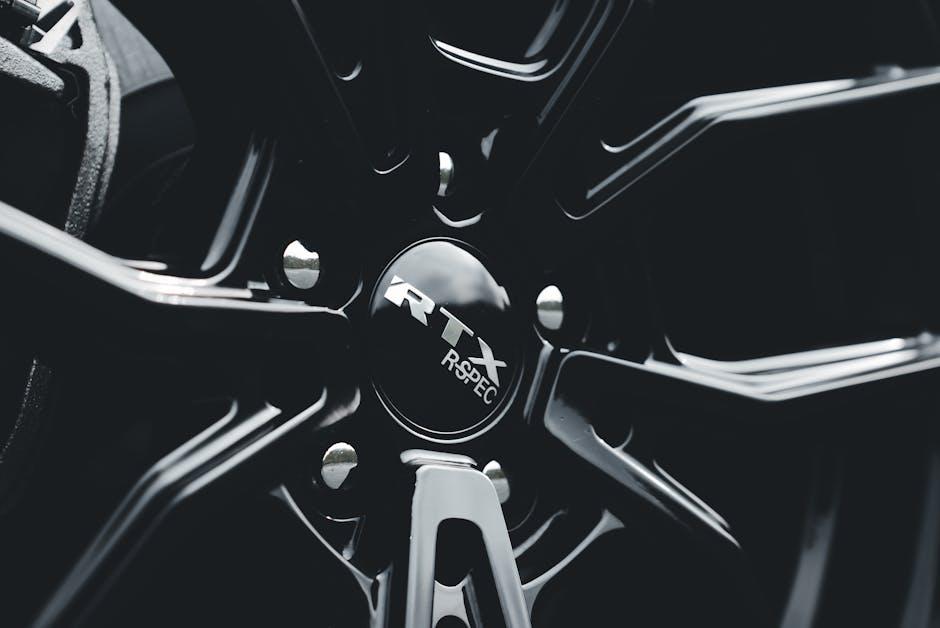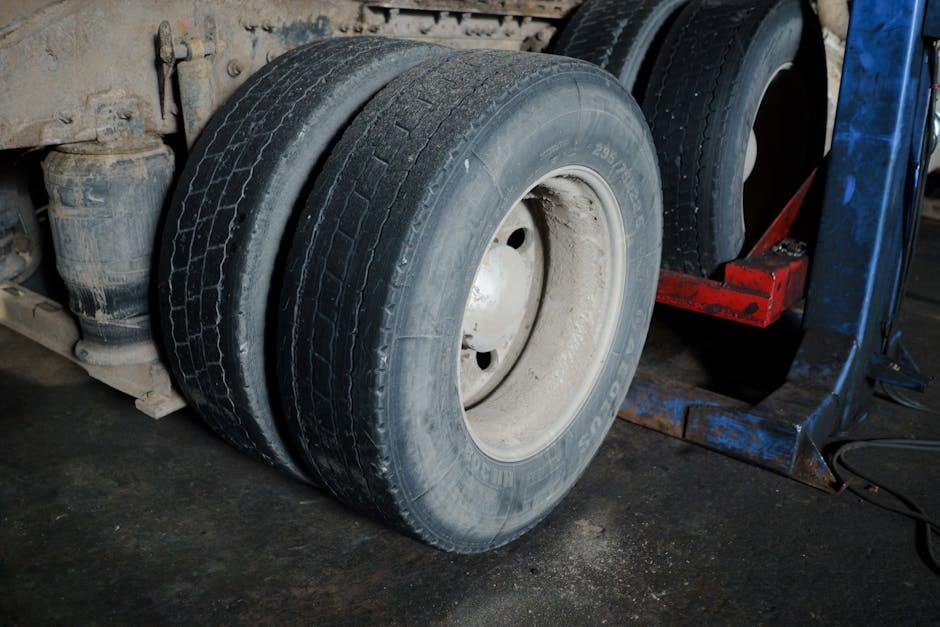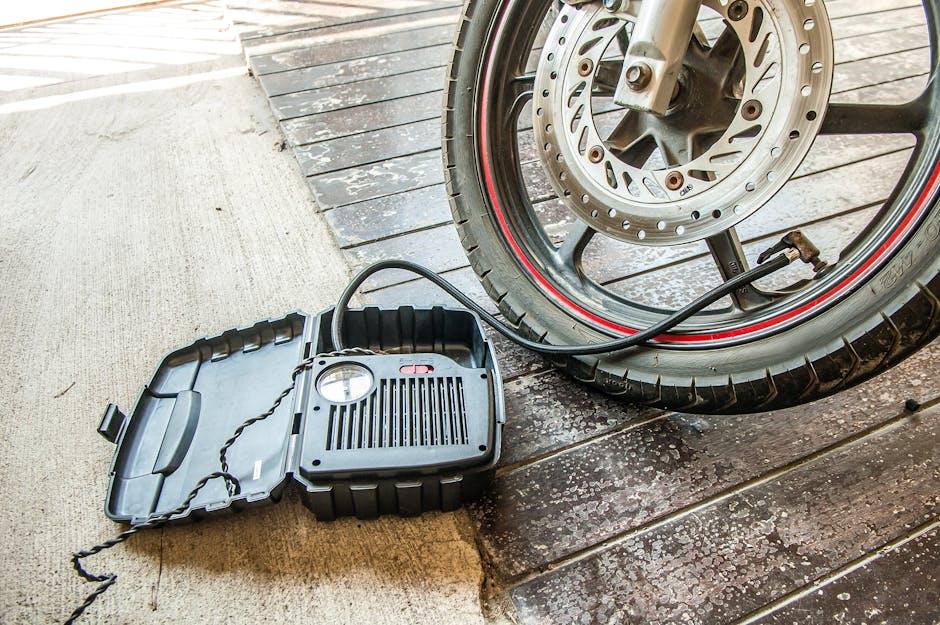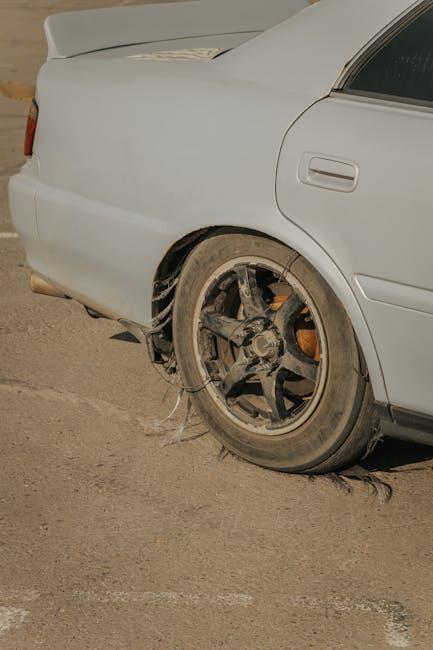A sudden tire blowout can turn an ordinary drive into a heart-stopping moment, leaving even the most experienced drivers scrambling for control. While these unexpected bursts may seem inevitable, many can actually be prevented with a bit of careful attention and proactive maintenance. In this article, we’ll explore practical steps and insightful tips to help you recognize warning signs, maintain your tires properly, and ultimately reduce the risk of blowouts on the road. Because when it comes to safety, a little foresight can go a long way toward keeping your journey smooth and worry-free.
Table of Contents
- Understanding the Common Causes Behind Tire Blowouts
- The Importance of Regular Tire Inspections and Maintenance
- Choosing the Right Tires for Your Vehicle and Driving Conditions
- Maintaining Proper Tire Pressure for Optimal Safety
- Recognizing Warning Signs of Tire Wear and Damage
- Best Driving Practices to Minimize the Risk of Blowouts
- Q&A
- Insights and Conclusions

Understanding the Common Causes Behind Tire Blowouts
Tire blowouts can often be traced back to a combination of factors that compromise the integrity of the tire over time. One of the leading causes is consistent underinflation, which leads to excessive heat buildup and weakened tire walls. Other significant contributors include damage from road debris, prolonged exposure to extreme temperatures, and worn-out tread that reduces traction and increases the risk of sudden failure. Mechanical issues such as faulty wheel alignment and overloading your vehicle also stress tires beyond their limits, making them more susceptible to blowouts.
Understanding these risks can help drivers take preventive measures. Key warning signs to watch for include:
- Visible cracks or bulges on the tire sidewall
- Rapid air pressure loss
- Uneven tire wear patterns
- Shaking or vibration while driving
Below is a quick reference table summarizing common causes and their typical warning signs to keep in mind:
| Cause | Warning Signs |
|---|---|
| Underinflation | Soft tires, frequent loss of pressure |
| Road Hazards | Bulges, cuts, punctures |
| Overloading | Premature tread wear, tire deformation |
| Extreme Temperatures | Cracking, dry rot |

The Importance of Regular Tire Inspections and Maintenance
Regular tire inspections are a crucial defense against unexpected blowouts. By routinely checking your tires, you can identify early signs of wear and potential hazards before they become serious problems. Look for uneven tread wear, cracks, bulges, or embedded objects. Maintaining the correct tire pressure not only improves fuel efficiency but also enhances tire performance and safety. Remember, underinflated tires generate excessive heat, which significantly increases the risk of blowouts on long journeys or hot days.
Key maintenance tips to keep tires in optimal condition:
- Check tire pressure monthly and before long trips using a reliable gauge
- Rotate tires every 5,000 to 7,000 miles to ensure even wear
- Inspect tire tread depth regularly; replace tires when tread reaches 2/32 inch
- Keep an eye out for any visible damage or foreign objects embedded in tires
| Issue | Signs to Watch For | Recommended Action |
|---|---|---|
| Uneven Wear | Tread is thinner on one side | Wheel alignment check |
| Low Pressure | Soft or bulging sidewalls | Inflate to manufacturer’s specs |
| Damage | Cuts, cracks, or embedded nails | Immediate repair or replacement |

Choosing the Right Tires for Your Vehicle and Driving Conditions
Understanding the type of tires best suited for your vehicle and driving environment is essential to maintaining safety and preventing sudden tire failures. Not all tires are created equal; factors such as tread design, rubber compound, and tire construction significantly impact performance. For example, all-season tires are versatile and handle various conditions moderately well, while summer tires provide superior grip on dry and wet roads but are less effective in cold climates. Similarly, winter tires are specially engineered to offer enhanced traction on snow and ice. Selecting tires aligned with your vehicle’s specifications and the typical weather you encounter ensures improved durability and stability.
Consider these important elements when deciding on the right tires:
- Load capacity: Tires must support the weight of your vehicle without being overstressed.
- Speed rating: Choose tires rated for your driving speed to maintain control and safety.
- Tread depth and pattern: Deeper treads improve grip, especially in wet conditions, while specialized patterns can assist in mud or snow.
- Vehicle type: Performance vehicles may require tires emphasizing handling, while SUVs need tires with durability for off-road conditions.
| Tire Type | Best Conditions | Key Features |
|---|---|---|
| All-Season | Mild weather, varying road conditions | Balanced tread design, reasonable lifespan |
| Summer | Warm, dry, and wet roads | Enhanced grip, softer compound |
| Winter | Snow, ice, and low temperatures | Deep tread grooves, special rubber |
| Off-Road | Rough terrains, mud, dirt | Reinforced sidewalls, aggressive tread |

Maintaining Proper Tire Pressure for Optimal Safety
Ensuring your tires are inflated to the manufacturer’s recommended pressure is crucial for preventing blowouts and enhancing overall vehicle performance. Underinflated tires generate excessive heat, which can weaken the tire structure and lead to sudden failure. Conversely, overinflated tires are more susceptible to damage from road hazards due to less surface contact and uneven wear. Make it a habit to check tire pressure monthly and before long trips, using a reliable gauge to maintain consistent safety standards.
- Inspect tire pressure when tires are cold, as heat affects readings.
- Use the vehicle’s placard, usually found on the door jamb, for the correct pressure levels.
- Adjust pressure based on load and driving conditions, especially during temperature changes.
| Pressure Level | Effect on Tires |
|---|---|
| Too Low | Excess heat & increased risk of blowout |
| Optimal | Proper grip, even wear, and fuel efficiency |
| Too High | Reduced traction & uneven wear |

Recognizing Warning Signs of Tire Wear and Damage
Identifying early signs of tire wear can save you from unexpected roadside emergencies. Look closely at the tread depth — if it’s approaching or below the legal minimum, it’s time to replace your tires. Uneven tread wear might indicate misaligned wheels or improper inflation, both of which compromise safety. Also, keep an eye out for sidewall bruises, cracks, or bulges, which are silent alarms signaling weakening tire structure. These subtle hints shouldn’t be ignored, as they can quickly escalate into tire failure.
Routine inspection habits help ensure tire longevity and performance. Make it a practice to check tires monthly and before long trips. Use a penny or tread depth gauge to measure wear, and visually scan for damage. Below is a quick reference guide for key warning signs and what they might mean:
| Warning Sign | Possible Cause | Recommended Action |
|---|---|---|
| Uneven Tread Wear | Wheel Misalignment | Get alignment checked and corrected |
| Cracks or Dry Rot | Aging or UV Damage | Replace tires promptly |
| Bulges or Bubbles | Internal Damage | Immediate tire replacement required |
| Excessive Vibration | Imbalanced Tires or Suspension Issues | Inspect and balance tires, check suspension |

Best Driving Practices to Minimize the Risk of Blowouts
Maintaining a steady and vigilant approach to driving significantly reduces the chances of a tire blowout. Sudden maneuvers, sharp turns, and abrupt braking put unnecessary stress on your tires, increasing wear and the likelihood of failure. By adopting a smoother driving style, you ensure the tires experience less pressure and heat buildup, which are common culprits in blowouts. Additionally, keep a close eye on road conditions—avoid potholes, debris, and rough patches that can cause tire damage. Incorporating these habits into your daily routine can extend tire life and greatly enhance your safety.
Regularly monitoring your vehicle’s condition can save you from unexpected blowouts. Here are essential practices to embed into your driving regimen:
- Check tire pressure: Properly inflated tires absorb shocks better and resist damage.
- Rotate tires periodically: Helps distribute wear evenly.
- Don’t overload your vehicle: Excess weight stresses tires beyond their capacity.
- Be mindful of weather changes: Hot asphalt in summer or icy roads in winter affects tire performance differently.
| Driving Behavior | Effect on Tires | Recommendation |
|---|---|---|
| Aggressive acceleration | Rapid wear and heat build-up | Accelerate smoothly |
| Frequent hard braking | Uneven tire tread damage | Maintain safe following distance |
| High-speed cornering | Increased sidewall pressure | Take turns at moderate speed |
Q&A
Q&A: How to Avoid Tire Blowouts
Q1: What exactly is a tire blowout?
A tire blowout is a sudden and often explosive loss of air pressure in a tire. It typically occurs when the tire’s structural integrity is compromised, causing it to burst and potentially leading to loss of vehicle control.
Q2: Why should I care about preventing tire blowouts?
Blowouts can be dangerous, especially at high speeds. They increase the risk of accidents, damage your vehicle, and can leave you stranded on the roadside. Avoiding blowouts means safer travels and fewer unexpected mishaps.
Q3: What are the most common causes of tire blowouts?
Common causes include underinflation, overloading, hitting road hazards like potholes or debris, poor tire maintenance, and worn or damaged tires. Extreme heat can also weaken tires, increasing the risk.
Q4: How often should I check my tire pressure?
It’s best to check your tire pressure at least once a month and before long trips. Tires naturally lose air over time, so regular monitoring helps maintain the optimal pressure recommended by your vehicle’s manufacturer.
Q5: Can tire age affect the likelihood of a blowout?
Absolutely. Tires degrade over time, even if they look fine. Rubber becomes brittle, tread wears down, and sidewalls weaken. Most experts recommend replacing tires every six years, regardless of tread depth or mileage.
Q6: Is there a risk in ignoring small punctures or slow leaks?
Yes. Even small punctures can worsen and cause sudden blowouts. Slow leaks reduce tire pressure gradually, often unnoticed, increasing heat and wear. Promptly repairing or replacing affected tires can prevent bigger problems.
Q7: How does load affect tire safety?
Exceeding your vehicle’s load capacity strains tires, leading to excessive heat buildup and potential blowouts. Always adhere to the load limits specified in your vehicle’s manual or tire sidewall.
Q8: What driving habits help reduce the chance of blowouts?
Driving cautiously—avoiding sharp turns, potholes, and road debris—helps protect tires. Maintaining moderate speeds reduces heat buildup, and gradually braking prevents excessive stress on tires.
Q9: Are there any technological aids to help prevent blowouts?
Yes. Many modern vehicles come equipped with Tire Pressure Monitoring Systems (TPMS) that alert you to pressure drops. Run-flat tires and reinforced sidewalls also offer added protection against blowouts.
Q10: What should I do if I experience a tire blowout while driving?
Stay calm. Firmly grip the steering wheel, avoid sudden braking or steering, and gradually slow down by easing off the accelerator. Once controlled, pull safely to the side of the road and seek professional help.
By staying vigilant with tire maintenance and mindful driving, you can greatly reduce the risk of tire blowouts – turning a potential roadside disaster into a smooth, worry-free journey.
Insights and Conclusions
In the end, avoiding tire blowouts isn’t just about reactive fixes—it’s about cultivating a mindful relationship with your vehicle’s most vulnerable contact points. By staying vigilant with regular inspections, maintaining proper tire pressure, and adapting your driving habits to the road and weather conditions, you transform what could be a sudden hazard into a manageable aspect of your journey. Safe tires lead to safer travels, and with each care-filled mile, you’re one step closer to cruising confidently without the fear of an unexpected blowout. Keep your wheels turning smoothly, and the road ahead will always be a little kinder.

